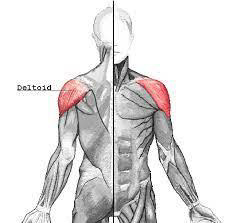


Joseph R. Anticaglia MD
Medical Advisory Board
Thousands of public service messages have encouraged American to roll up their sleeves and take a shot in the arm to become vaccinated against COVID-19. Despite different methods of administering vaccines, the aim of vaccinations is to protect people against specific diseases.
Vaccines introduce antigens — substances into the body to uplift the immune system to recognize, neutralize and defeat foreign invaders. Some vaccines are administered orally; for instance, the polio vaccine. Rotaviruses account for roughly one third of hospitalizations for severe diarrhea diagnosed in infants and children. The rotavirus vaccine is given orally. Measles, Mumps and Rubella (MMR) are injected subcutaneously (just under the skin). The nasal spray vaccine protects against flu viruses.
The often used technique of getting vaccines into people’s bodies is to inject the vaccines into a person’s muscle. The deltoid muscle in the arm is a common, recommended intramuscular (IM) site of injection, the other is the thigh. Why in the arm? Is there scientific evidence to justify injecting shots into the muscle of the upper arm?
The deltoid muscle, located in the upper arm, forms the rounded shape of the shoulder. It is the preferred site of injection for COVID-19 vaccinations. It gets its name from the Greek capital letter “delta” (Δ).

The immune system is composed of white blood cells which are manufactured in the bone marrow. They differentiate into B-cells and T-cells. If foreign substances (antigens) enter the body, the immune system is activated to seek, neutralize, destroy, and dispose of the remains of the unwanted invaders. B-cells (B-lymphocytes) recognize the “face” of the enemy, locate, and engage the enemy with antibodies and lock on to it. They send an urgent signal requesting immediate help of the T-cells.
T-cells (T-lymphocytes) get the message and work to destroy harmful elements that enter the body (e. g., viruses, bacteria, fungi).
Vaccines are created to initiate an immune response in the body against a specific disease without causing the disease. The immune cells of the deltoid muscle recognize vaccines as foreign bodies and initiate the immune response The cells are transported to the nearby axillary lymph glands (armpit) where a more robust immune response takes place leading to a systemwide response.
Vaccines are often recommended to be given intramuscularly. The deltoid muscle is convenient, an easily targeted muscle that reduces adverse reactions at the site of the injection and increases the level of immune response of the vaccine (immunogenicity).
The mRNA vaccines deliver “blueprints” that instruct a patient’s own immune cells to create proteins to prevent or treat diseases.
An adjuvant, according to the CDC, ‘is an ingredient used in some vaccines that helps create a stronger immune response in people receiving the vaccine. In other words, adjuvants help vaccines work better. They should be given intramuscularly to avoid inflammation.’
This article is intended solely as a learning experience. Please consult your physician for diagnostic and treatment options.